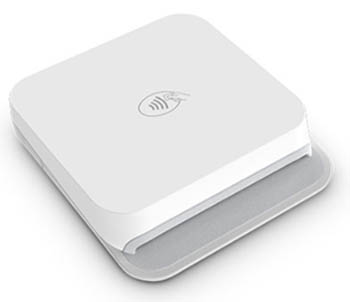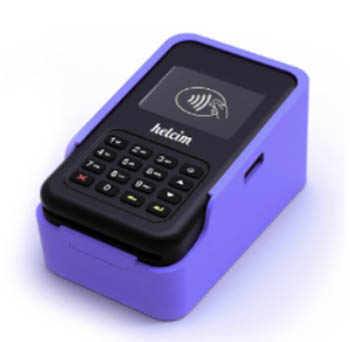Helcim and Stripe are both powerful merchant service providers that offer zero monthly fees and accept a wide number of payment types. When it comes to Helcim vs Stripe, Helcim is the cheaper option with its low interchange-plus pricing and automatic volume discounts, while Stripe is an excellent online payment processor with numerous integrations.
In our evaluation of the best merchant service providers for small businesses, Helcim came out as the cheapest and earned an overall score of 4.32 out of 5. On the other hand, Stripe got an overall score of 3.89 out of 5 and came out as the best for online payments.
When it comes to choosing between Stripe or Helcim, we recommend:
- Helcim: Best for low interchange-plus pricing and out-of-the-box solutions
- Stripe: Best for customizations and wide integrations
Helcim vs Stripe Quick Comparison
Stripe and Helcim are both well-known, powerful payment processors, but one major difference between them is the type of merchant account they provide. Stripe offers an aggregated merchant account whereas, Helcim provides a dedicated merchant account. If you need a merchant account that you can set up and use in a matter of hours, an aggregator like Stripe is best for you. However, if your priority is account stability and do not mind a stricter application process, Helcim is the better option.
Dedicated Merchant Account vs Aggregated Merchant Account
Businesses need a merchant account to start accepting payments. A dedicated merchant account is an individual account that is unique to the business. On the other hand, an aggregated merchant account is a shared account for multiple businesses under a single account held by a payment facilitator.
A dedicated merchant account is a safer and more stable solution for businesses but usually involves a more stringent application and underwriting process. It is often much easier to open aggregated merchant accounts, although they are prone to account freezes and fund holds.
Helcim scored higher in our evaluation, mainly for its interchange-plus pricing and wide availability of payment types. Stripe is still an excellent option, especially if you want a provider that offers a lot of integrations and is highly customizable.
Both Helcim and Stripe are included in many of our buyer’s guides:
- Best Merchant Accounts
- Best Free Merchant Accounts
- Best international merchant accounts
- Best PayPal Alternatives
- Best B2B Payment Solution
When to Use an Alternative
Both Stripe and Helcim are popular merchant service providers but if you are looking for something different, such as more flexible POS systems, easy integrations, or subscription pricing, consider the alternatives below.
Best for | Free flexible POS system | High-volume merchants with large transaction amounts | Occasional sales |
Monthly fee | $0 | $79 | $0 |
Card-present transaction fee | 2.6% + 10 cents | Interchange + 8 cents | 2.29% + 9 cents |
Keyed-in transaction fee | 3.5% + 15% | Interchange + 18 cents | 3.49% + 9 cents |
Ecommerce transaction fee | 2.9% + 30 cents | Interchange + 18 cents | 2.99% + 49 cents |
Neither Stripe nor Helcim supports high-risk businesses. If you have a business in the high-risk category, consider our top option for high-risk merchant accounts, PaymentCloud. Read our full PaymentCloud review.
Helcim vs Stripe Pricing
 | ||
|---|---|---|
Score | 4.56 out of 5 | 3.94 out of 5 |
Ecommerce Transaction Fees | Interchange plus 0.15%–0.5% + 15–25 cents | 2.9% + 30 cents |
Virtual Terminal Transaction Fees | Interchange plus 0.15%–0.5% + 15–25 cents | 3.4% + 30 cents |
In-person Transaction Fees | Interchange plus 0.15%–0.4% + 6–8 cents | 2.7% + 5 cents |
ACH/E-check Transaction Fees | 0.5% + 25 cents per transaction | 0.8% per transaction capped at $5 per transaction |
Invoice Fees | Interchange plus 0.15%–0.5% + 15–25 cents | + 0.4%–0.5% |
Recurring Billing Fees | Interchange plus 0.15%–0.5% + 15–25 cents | + 0.5%–0.8% |
International Transaction Fees | Card issuer fees only | +1.5% |
Chargeback fees | $15 (refundable) | $15 (non-refundable) |
Card Reader | Starts at $109 | Starts at $59 |
Helcim offers a competitive pricing structure with interchange-plus pricing and automatic volume discounts. This means that as your business grows and processes more payments, you can benefit from reduced transaction fees, making it an attractive choice for growing businesses with increasing transaction volumes. Learn more about interchange fees.
Stripe, on the other hand, has a simple flat-rate pricing model, which may be more straightforward for smaller businesses. However, it’s worth noting that this flat-rate fee may be less cost-effective for businesses with larger transaction volumes.
Both Helcim and Stripe offer solid invoicing and recurring billing, but Stripe charges add-on transaction fees. This additional cost can be significant for small businesses accepting payments through these methods.
When it comes to chargeback fees, Helcim and Stripe charge the same amount, but Helcim refunds the fee if you win the dispute.
For businesses that would like to pass on the credit card processing fees to their customers, Helcim has a surcharging feature called Helcim Fee Saver. It lets merchants include processing fees, convenience fees, and service charges in the final transaction amount, which effectively provides free credit card processing for the merchant.
If your business needs to process in-person payments, Stripe’s lowest-priced card reader is cheaper than Helcim’s. However, Stripe’s card readers are not out-of-the-box solutions. You will need to configure the hardware to work with your POS system or with Stripe Terminal using Stripe’s application programming interface (APIs). On the other hand, Helcim’s card reader is designed to work straight out of the box with the Helcim mobile POS app.
 |  |
Stripe Reader M2 Swipe, Dip, Tap $59 | Helcim Card Reader 2nd Gen Dip, Tap, Pin $109 |
The Stripe Reader M2 (left) can accept swipe, dip, and tap payments, while the Helcim Card Reader (right) can accept dip, tap, and PIN payments. (Source: Stripe and Helcim) | |
Our expert take: When it comes to affordability, Helcim is the clear winner over Stripe, especially if you are a growing small business that foresees increasing transaction volume in the near future. However, if you need a merchant account that is fast and easy to set up, Stripe can get you up and running much quicker than Helcim.
Helcim vs Stripe Payment Types
 | ||
|---|---|---|
Score | 5 out of 5 | 3.75 out of 5 |
Ecommerce | Built-in website builder; Food ordering app | Easy integration or with coding |
Mobile POS | ✓ | With API integration |
Invoicing | ✓ | ✓ |
Recurring Billing | ✓ | ✓ |
Virtual Terminal | ✓ | ✓ |
Payment links | ✓ | ✓ |
ACH Processing | ✓ | ✓ |
International Support | 2 currencies, 2 countries | 135+ currencies, 47+ countries |
Both Helcim and Stripe offer a wide range of payment types, making them suitable for various businesses. However, Helcim scored higher in this category, mainly for ecommerce and mobile payments.
Helcim offers a free website builder and proprietary point-of-sale (POS) application, Helcim Payments—two major things that Stripe does not provide without any integration or coding. Helcim’s Online Checkout is a full end-to-end ecommerce store that you can use for free, while Stripe only allows you to create a custom online checkout page.
When it comes to POS systems, Stripe requires integration with a third-party POS or your custom-built application. On the other hand, the Helcim Payments app is a free-to-use POS system that can be used on desktop or mobile devices.
A major edge that Stripe has over Helcim in this category is its wider international support. Helcim is only currently available in the US and Canada while Stripe is available almost anywhere.
Our expert take: If you need a provider that offers easy omnichannel selling, Helcim offers everything a small business needs without any extra technical expertise. However, if your business is outside the US or Canada, then Stripe is a better option for you.
Helcim vs Stripe Features
 | ||
|---|---|---|
Score | 3.19 out of 5 | 3.25 out of 5 |
Deposit Speed | 2 business days | Instant Payout: 1% fee Standard: 2–3 business days |
Chargeback Protection | ✕ | + 0.40% per transaction |
Chargeback Fee | $15 refundable | $15 non-refundable |
Fraud Prevention | Helcim Fraud Defender (CVV, AVS, IPV) | Stripe Radar (CVV, AVS, IPV) |
PCI Compliance | ✓ | ✓ |
Customer Service |
|
|
Buy Now, Pay Later | ✕ | ✓ |
Stripe narrowly beats Helcim in this category with its instant payout option and 24/7 customer support.
Helcim typically offers two business days’ deposit speed, which is standard in the industry. In contrast, Stripe provides an instant payout option for a fee, which can be advantageous for businesses needing quicker access to funds.
Both Helcim and Stripe offer customer support, but there are differences in their availability. Helcim provides support during specific hours, while Stripe offers 24/7 support, which can be crucial for online businesses or those operating globally.
Stripe offers chargeback protection with an additional fee, while Helcim does not have a specific chargeback protection feature. Helcim instead offers a dispute management tool and refunds fees for disputes won, so it is more ideal for businesses that prefer to dispute chargebacks as they occur.
Businesses with a higher risk of chargebacks may need to consider this when choosing a provider. If you go for Helcim, make sure to learn how to dispute a chargeback to increase your chances of disputing a chargeback.
Another advantage Stripe has over Helcim is the availability of Buy Now, Pay Later (BNPL) options. Stripe offers BNPL through Affirm, Afterpay, Klarna, and Zip. Read our guide to Buy Now, Pay Later to learn more about this payment option.
Our expert take: Stripe’s instant payout option, fraud protection, and 24/7 customer support are essential for some small businesses. If those are among your main priorities, choose Stripe over Helcim. Aside from these, Stripe offers two distinct features that are not available with Helcim – chargeback protection and BNPL. If those two are musts for your business, go for Stripe.
Helcim vs Stripe Expert Score
 | ||
|---|---|---|
Score | 4.06 out of 5 | 4.69 out of 5 |
Pricing | Low interchange-plus pricing with automatic volume discounts | Affordable option for lower transaction amounts |
Ease of Use | User-friendly | Developer-friendly |
User Reviews | Well-known and trusted platform | Well-known and trusted platform |
Integrations | Limited integrations | Easy integrations with popular platforms, powerful APIs |
In our expert score evaluation, Stripe stands out with its extensive list of integrations and powerful APIs. This makes it a top choice for businesses that require seamless integration with third-party applications or custom development. Helcim, while offering fewer integrations, provides a user-friendly experience, making it a good fit for businesses that value simplicity and ease of use.
If you already have a website or prefer to design your own, Stripe allows better customizations through its APIs and SDKs. Helcim is for those who prefer a payment solution that can be used quickly with little to no tinkering.
Our expert take: Helcim and Stripe may seem very similar at first glance when looking at their processing capabilities. However, they differ in terms of the type of users it would be best for. Stripe is for businesses that prefer to design their own payment solutions and have numerous integration options. Helcim, on the other hand, is more suitable for merchants who are happy with “stock” options and prefer simple straightforward ways of accepting payments.
Methodology—How We Evaluated Stripe vs Helcim
We test each merchant service provider ourselves to ensure an extensive review of the products. We then compare pricing methods and identify providers that offer zero monthly fees, pay-as-you-go terms, and low transaction rates. Finally, we evaluate each according to various payment processing features, scalability, and ease of use.
The result is our list of the best merchant services providers. However, we adjust the criteria for specific use cases, such as for different business types and merchant categories. This is why every provider has multiple scores across our site, depending on the use case you are looking for. For this in-depth analysis, we looked closely at how Helcim and Stripe performed.
Click through the tabs below for our overall merchant account evaluation criteria:
25% of Overall Score
We awarded points to merchant account providers that don’t require contracts and offer month-to-month or pay-as-you-go billing. Additionally, we prioritized providers that don’t charge hefty monthly fees, cancellation fees, or chargeback fees and only included providers that offer competitive and predictable flat-rate or interchange-plus pricing. We also awarded points to processors that offer volume discounts, and extra points if those discounts are transparent or automated.
30% of Overall Score
The best merchant accounts can accept various payment types, including POS and card-present transactions, mobile payments, contactless payments, ecommerce transactions, and ACH and e-check payments, and offer free virtual terminal and invoicing solutions for phone orders, recurring billing, and card-on-file payments.
25% of Overall Score
20% of Overall Score
Helcim vs Stripe Frequently Asked Questions (FAQs)
Yes, Helcim is generally considered cheaper than Stripe for payment processing due to its interchange-plus pricing model and automatic volume discounts, making it a cost-effective choice for many businesses.
Stripe offers several features and capabilities that Helcim does not, including extensive integrations, customizations, instant payouts, Buy Now, Pay Later payment options, and wider international support.
The main differences between Helcim and Stripe are in their pricing models and merchant account types. Helcim offers interchange-plus pricing with automatic volume discounts, making it a cost-effective choice, especially for growing businesses. It provides dedicated merchant accounts for added stability.
In contrast, Stripe uses a flat-rate pricing model, which may be simpler for smaller businesses but potentially less cost-effective as transaction volumes increase. Stripe offers aggregated merchant accounts, making setup faster but potentially less stable. Additionally, Stripe excels in customization, extensive integrations, instant payouts, and international support, catering to businesses with diverse needs.
Bottom Line
In the matchup of Helcim or Stripe for 2023, the choice ultimately boils down to your business’s unique needs and priorities.
Helcim is a cost-effective option with low interchange-plus pricing and automatic volume discounts, ideal for budget-conscious businesses. Its dedicated merchant accounts ensure stability. On the other hand, Stripe excels in customization and integrations, making it suitable for businesses needing tailored solutions and global reach. It offers instant payouts and 24/7 support for added convenience.
Consider your business’s size, growth trajectory, technical requirements, and global presence when making your decision on Stripe vs Helcim. Whether you prioritize cost-effectiveness and stability (Helcim) or customization and integrations (Stripe), both providers offer robust solutions for your payment processing needs.

